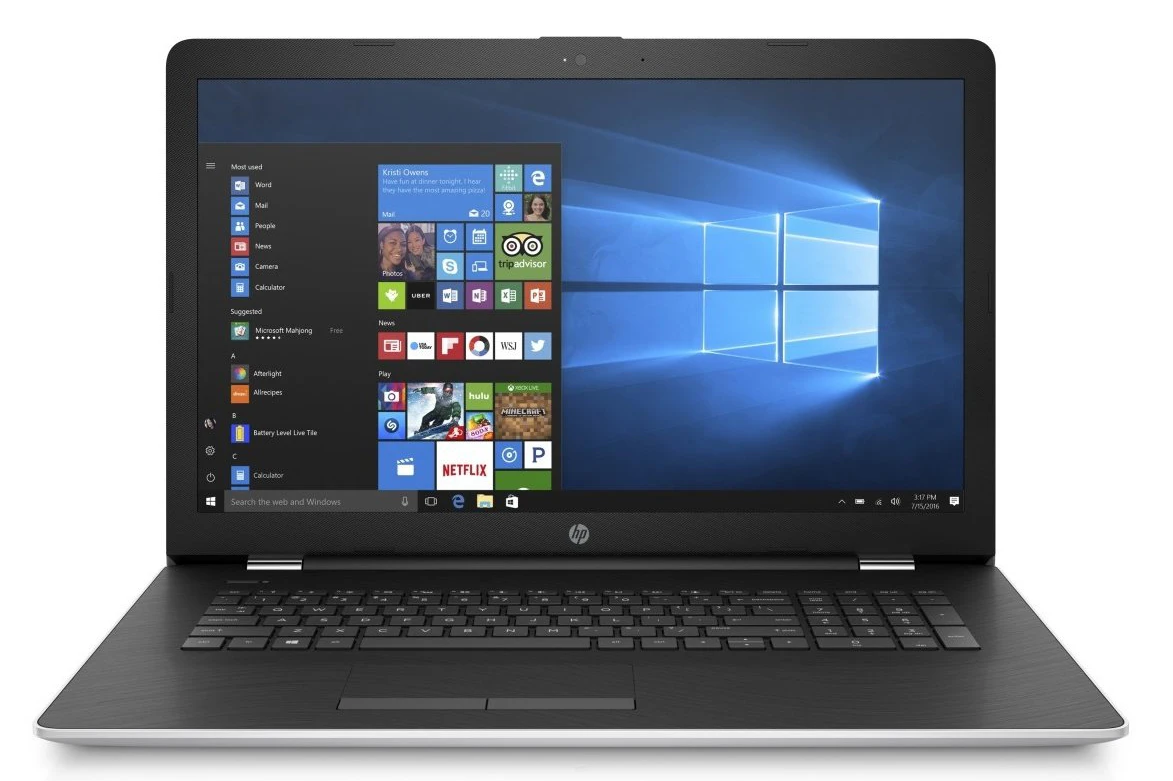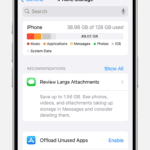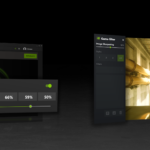Troubleshooting common issues with your HP 17 series laptop can save you time and frustration. This guide provides a concise overview of frequent problems and their solutions, empowering you to address them effectively. It also includes a handy table summarizing troubleshooting steps and directs you to valuable HP support resources for further assistance. By following these guidelines and utilizing the available support, you can keep your HP laptop running smoothly and efficiently.
Most issues with HP 17 laptops can be fixed at home using basic troubleshooting techniques. This guide will help you solve common problems quickly and easily.
Power issues often cause the most worry. If your HP 17 won’t turn on, try unplugging it and removing the battery for a few minutes. This can reset the power system. Then plug it back in and try again. Make sure the charging light comes on when plugged in.
For software problems, start with a reboot. This fixes many glitches. If that doesn’t work, try booting in Safe Mode to check if the issue is with Windows or a program you installed. The HP Support Assistant tool can also help diagnose and fix common laptop issues.
| Common HP 17 Issues | Quick Fix |
|---|---|
| Won’t turn on | Check power connections |
| Blue screen errors | Update drivers |
| Slow performance | Run disk cleanup |
| No internet | Restart Wi-Fi adapter |
Troubleshooting Your HP 17 Series Laptop
Having trouble with your HP 17 series laptop? Don’t panic! Many common problems can be solved with some simple troubleshooting steps. This guide will walk you through some common issues and their solutions.
Common Issues and Solutions
1. Laptop Won’t Turn On
- Check the Power: Ensure the laptop is plugged in and the power adapter is securely connected. Test the power outlet with another device to make sure it’s working.
- Inspect the Battery: If the battery is removable, take it out and reinsert it. Try powering on the laptop with just the AC adapter connected.
- Check for Overheating: If the laptop feels excessively hot, let it cool down before attempting to turn it on again.
2. Laptop is Slow or Freezing
- Close Unnecessary Programs: Too many programs running at once can slow down your laptop. Close any applications you’re not actively using.
- Restart Your Laptop: A simple restart can often resolve temporary software glitches.
- Run a Virus Scan: Malware can significantly impact performance. Run a full system scan with your antivirus software.
- Free Up Disk Space: Low disk space can also slow down your laptop. Delete unnecessary files or uninstall unused programs.
3. Wi-Fi Connectivity Problems
- Toggle Wi-Fi: Turn your Wi-Fi off and then back on in the Windows settings.
- Restart Your Router: Sometimes, the issue is with your internet connection rather than your laptop. Restarting your router can help.
- Update Network Drivers: Outdated or corrupted network drivers can cause connectivity issues. Check for driver updates on the HP support website.
4. Display Issues
- Adjust Brightness: Make sure the brightness isn’t turned down too low. Use the function keys on your keyboard to adjust the brightness.
- Check External Connections: If you’re using an external monitor, ensure the cables are securely connected.
- Update Graphics Drivers: Outdated graphics drivers can cause display problems. Download the latest drivers from the HP support website or the graphics card manufacturer’s website.
5. Overheating
- Clean the Vents: Dust and debris can clog the laptop’s vents, preventing proper cooling. Use compressed air to clean the vents.
- Use a Cooling Pad: A cooling pad can help improve airflow and reduce heat buildup.
- Avoid Blocking Vents: Don’t place the laptop on soft surfaces like beds or blankets, as this can block the vents.
HP 17 Series Laptop Troubleshooting Table
| Issue | Possible Causes | Solutions |
|---|---|---|
| Laptop won’t turn on | Power issues, battery problems, overheating | Check power cord and outlet, inspect and reseat battery, let laptop cool down |
| Laptop is slow or freezing | Too many programs, software glitches, malware, low disk space | Close unnecessary programs, restart laptop, run virus scan, free up disk space |
| Wi-Fi connectivity problems | Wi-Fi toggled off, router issues, outdated drivers | Toggle Wi-Fi on/off, restart router, update network drivers |
| Display issues | Low brightness, loose connections, outdated drivers | Adjust brightness, check external connections, update graphics drivers |
| Overheating | Clogged vents, poor airflow | Clean vents with compressed air, use a cooling pad, avoid blocking vents |
HP Support Resources
If you encounter a problem not listed here or need further assistance, HP offers various support resources:
- HP Support Website: Visit the HP support website for your specific laptop model to find drivers, manuals, and troubleshooting articles.
- HP Support Assistant: This software, pre-installed on most HP laptops, can help diagnose and resolve issues.
- HP Community Forums: Connect with other HP users and find solutions to common problems.
- HP Customer Support: Contact HP customer support by phone or email for personalized assistance.
Preliminary Checks and Diagnostics
Before diving into complex troubleshooting, it’s crucial to perform basic checks and diagnostics on your HP laptop 17. These steps can often resolve common issues and prevent unnecessary repairs.
Identifying Common HP Laptop Issues
Start by checking your laptop’s power supply. Ensure the battery is charged and the AC adapter is properly connected. Look for any visible damage to the power cord or ports.
Next, examine the display for dead pixels or backlight issues. Test all USB ports, headphone jacks, and other connections. Pay attention to unusual noises like fan rattling or hard drive clicking.
Check for overheating by feeling the bottom of the laptop and listening for constant fan noise. Slow performance might indicate low storage space or malware.
| Common Issue | Possible Cause | Quick Check |
|---|---|---|
| Won’t turn on | Power supply | Test with AC adapter |
| Slow performance | Low storage/RAM | Check Task Manager |
| Display problems | Graphics driver | Update drivers |
| Overheating | Dust buildup | Clean vents |
Using HP PC Hardware Diagnostics for Basic Troubleshooting
HP PC Hardware Diagnostics is a built-in tool that can identify hardware failures. To access it, restart your laptop and press F2 repeatedly during startup.
Select “Component Tests” to run diagnostics on specific parts like the hard drive, memory, or battery. The “Quick Tests” option provides a rapid overview of your system’s health.
Pay attention to any error codes or messages displayed during the tests. These can guide you towards the root cause of your laptop’s issues.
If HP PC Hardware Diagnostics doesn’t start, you can download the UEFI version from HP’s support website. This tool runs independently of your operating system, allowing for more thorough testing.
Performance Optimization and Maintenance
HP laptop 17 models can benefit from regular upkeep and optimization. These practices help maintain speed and efficiency while extending the device’s lifespan.
Enhancing HP Laptop Performance
To boost your HP laptop 17’s performance, start by updating virus definitions and running scans. This protects your system and keeps it running smoothly. Next, uninstall unused programs and remove temporary files to free up disk space.
Consider upgrading your RAM if you frequently multitask or use demanding applications. Check your laptop’s specifications to determine the maximum supported RAM.
Use the built-in Windows performance troubleshooter to identify and fix issues. Access this tool through the Control Panel or Settings app.
Disable visual effects to reduce system load. Right-click on “This PC,” select “Properties,” then “Advanced system settings.” Under the “Performance” section, choose “Settings” and select “Adjust for best performance.”
Routine Maintenance Procedures
Implement these maintenance tasks to keep your HP laptop 17 in top shape:
- Update Windows and drivers regularly
- Clean the laptop’s exterior and keyboard weekly
- Use compressed air to remove dust from vents monthly
- Organize files and delete unnecessary data quarterly
- Defragment the hard drive (for non-SSD devices) every six months
Run HP’s PC hardware diagnostics tool periodically to catch potential hardware issues early. This can prevent more serious problems down the line.
Create system restore points before making significant changes. This allows you to revert to a stable configuration if needed.
Restoring HP Laptop to Factory Settings
When other troubleshooting methods fail, restoring your HP laptop 17 to factory settings can resolve persistent issues. Before proceeding, back up all important data to an external drive or cloud storage.
To restore your laptop:
- Open the Start menu and click on Settings
- Select “Update & Security”
- Click on “Recovery” in the left panel
- Under “Reset this PC,” click “Get started”
- Choose to keep or remove your files
- Follow the on-screen instructions to complete the process
This process reinstalls Windows and removes most installed programs. It can take several hours to complete. After restoration, reinstall necessary software and restore your backed-up data.
| Maintenance Task | Frequency | Benefit |
|---|---|---|
| Update software | Monthly | Security and performance |
| Clean hardware | Weekly | Prevents overheating |
| Backup data | Monthly | Protects against data loss |
| Run diagnostics | Quarterly | Identifies potential issues |
Hardware Specific Troubleshooting
HP laptop 17 models can face various hardware issues. These problems often relate to battery life, display functionality, and system performance. Addressing these concerns requires targeted approaches for each component.
Resolving Battery and Power Issues
Battery problems are common in HP laptop 17 devices. To check your battery’s health, use HP’s built-in diagnostic tools. Access these by pressing F2 during startup.
If your laptop won’t hold a charge, try these steps:
- Unplug the power cord
- Remove the battery
- Hold the power button for 15 seconds
- Reinsert the battery and plug in the power cord
This process can reset the battery connection. For persistent issues, consider replacing the battery.
Ensure your power settings are optimized. Adjust screen brightness and sleep timers to extend battery life.
Fixing Display and Graphics Problems
Display issues on HP laptop 17 models can range from flickering screens to complete blackouts. To troubleshoot:
- Update graphics drivers
- Check for loose connections
- Test with an external monitor
If the problem persists on an external display, it may indicate a graphics card issue. In this case, contact HP support for further assistance.
For screen flickering, try disabling Windows visual effects:
- Open Performance Options
- Select ‘Adjust for best performance’
- Apply changes and restart
Hard Reset Process and Its Impact
A hard reset can resolve many hardware-related issues on HP laptop 17 models. This process clears the memory and restarts all components. To perform a hard reset:
- Turn off the laptop
- Remove the battery and unplug the power cord
- Press and hold the power button for 15 seconds
- Reinsert the battery and plug in the power cord
- Turn on the laptop
This can fix issues like unresponsive keyboards or touchpads. It may also resolve boot problems.
Note that a hard reset doesn’t affect your data or files. However, it will close all open programs, so save your work before proceeding.
Network and Connectivity Solutions
HP laptop 17 models can experience various networking issues. These problems often have simple fixes that users can apply without technical expertise.
Addressing HP Laptop Networking Problems
To troubleshoot network connectivity on your HP laptop 17, start by resetting your wireless router. Unplug it for 30 seconds, then plug it back in. This often resolves basic connection issues.
Next, check your laptop’s Wi-Fi switch. Some HP models have a physical switch or a function key to toggle Wi-Fi. Ensure it’s turned on.
Update your network adapter drivers. Go to Device Manager, find Network Adapters, right-click your Wi-Fi adapter, and select “Update driver”.
If problems persist, run HP’s built-in diagnostics. Download HP PC Hardware Diagnostics and run the Networking test. This can identify hardware failures.
Try connecting to both 2.4 GHz and 5 GHz networks if available. Some devices work better with one or the other.
| Troubleshooting Step | Description |
|---|---|
| Reset Router | Unplug for 30 seconds |
| Check Wi-Fi Switch | Ensure it’s on |
| Update Drivers | Use Device Manager |
| Run Diagnostics | Use HP PC Hardware Diagnostics |
| Try Different Networks | Test 2.4 GHz and 5 GHz |
If these steps don’t work, your laptop may have a hardware issue. Contact HP support for further assistance.
Frequently Asked Questions
HP Laptop 17 users often encounter various issues. These common problems have straightforward solutions that can be implemented quickly at home.
How can I resolve a non-booting issue in an HP laptop 17?
Check the power connection first. Ensure the battery is charged and properly seated. Try removing the battery and running on AC power alone.
If it still won’t boot, perform a hard reset by disconnecting all power sources and holding the power button for 15 seconds. Reconnect power and try again.
What steps should be taken to reset an unresponsive HP laptop?
Start with a soft reset by holding the power button for 10 seconds to force a shutdown. Wait 30 seconds, then power on normally.
If that doesn’t work, try a hard reset as described above. As a last resort, you may need to restore to factory settings.
Where can the reset button be located on an HP laptop?
Most HP laptops don’t have a dedicated reset button. Instead, use the power button to perform resets. On some models, a small pinhole reset button may be found on the bottom of the laptop.
Always check your specific model’s manual for the exact location.
How can one access repair mode on an HP laptop?
To access repair mode:
- Restart your laptop
- Press F11 repeatedly as it boots
- Select “Troubleshoot” from the options
- Choose “Recovery Manager” to access repair tools
This mode allows you to run diagnostics and repair Windows issues.
What are common troubleshooting methods for HP Laptop 17 running Windows 10?
Update drivers regularly through Windows Update or HP Support Assistant. Run the Windows troubleshooter for specific issues like audio or network problems.
For performance issues, try disabling startup programs and running a disk cleanup. The HP Support website offers model-specific troubleshooting guides.
What should be done when an HP laptop suddenly fails to power on?
First, check all power connections. Try a different outlet and power adapter if available. Remove the battery and attempt to power on using just AC power.
If it still won’t turn on, perform a hard reset. If the issue persists, there may be a hardware problem requiring professional service.
| Issue | First Step | Second Step | Third Step |
|---|---|---|---|
| Won’t Boot | Check Power | Hard Reset | Factory Reset |
| Unresponsive | Soft Reset | Hard Reset | Factory Reset |
| No Power | Check Connections | Try AC Only | Hard Reset |
| Windows Issues | Run Troubleshooter | Update Drivers | Access Repair Mode |







